The Nine Best California Pummelos
I have been a citrus lover from early childhood when I visited my grandparents in Florida and ate oranges right off of their tree. When I moved to California in 2000, I was quite excited to be living in a citrus state for the first time. I wanted to learn all that I could about citrus and I made the pilgrimage to Riverside, the mecca for California citrus lovers. I toured the Citrus Variety Collection in Riverside which is sort of like a Noah's Ark for citrus in the United States; they have two of each of hundreds of kinds of citrus trees. At the Citrus Variety Collection I tasted so many citrus varieties that I had never even heard of. I tasted citrus more delicious than any that I had previously tasted. Most Americans have never even heard of pummelos. At the Citrus Variety Collection, not only was I able to taste pummelos, but I was also able to taste the very best of them. I was hooked. Pummelos (also spelled pomelos) are originally from Asia where they are very popular; unfortunately, in the United States the allure of pummelos has turned deadly. Propagative material of pummelos smuggled from Asia is believed to have brought the tree-killing citrus greening disease to the United States. This disease has caused billions of dollars in economic damage in Florida and threatens all other citrus states. All of this could have been avoided if the smugglers had been aware of the pummelos already available to them.
In the time since my first visit to the Citrus Variety Collection, I have learned so much more about the pummelo varieties available in California. I now know which ones taste like the ones in Asia, which ones do best in marginal climates, and which ones are most likely to be ripe by the Chinese New Year. By sharing this here, I hope that I can help others to grow the pummelos that they would like to grow in California.
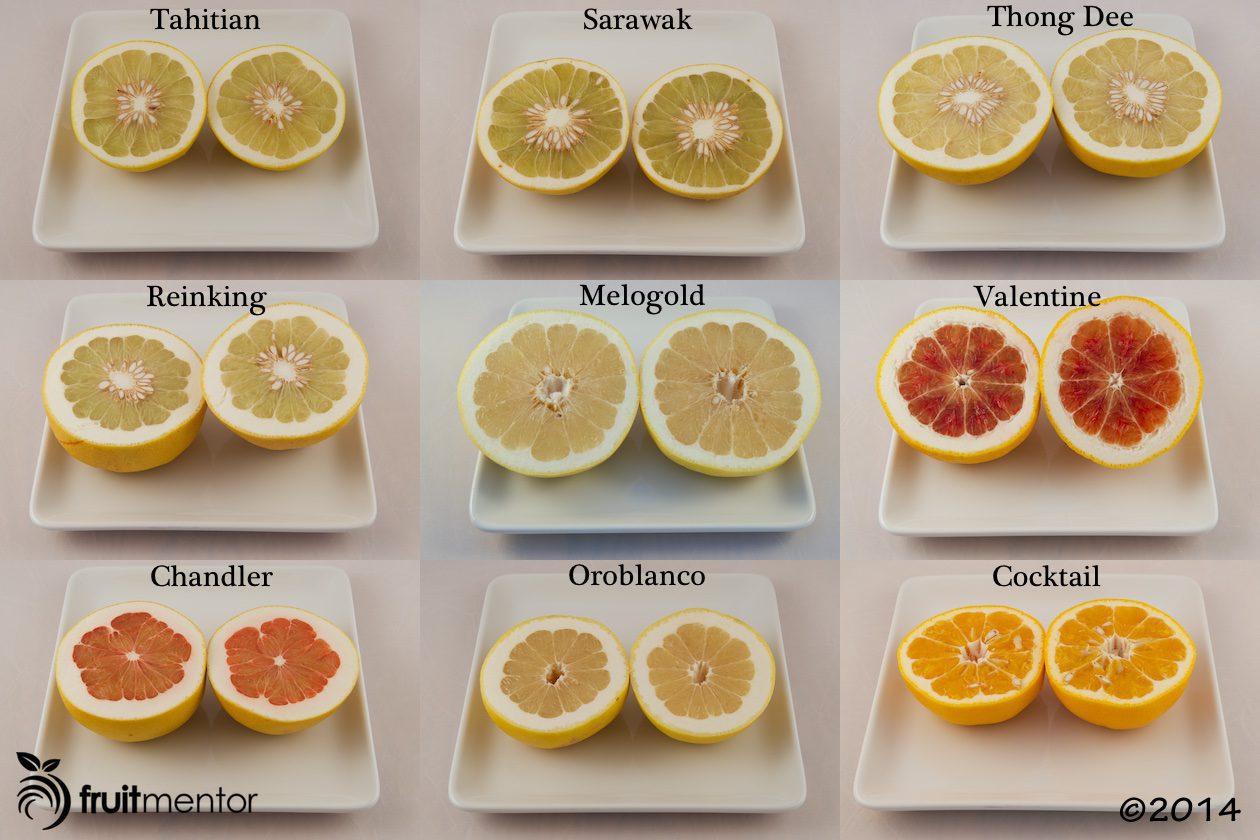
When I bought my first house in California, I was quick to plant a pummelo tree. I planted a Chandler Pummelo tree not because it was my favorite, but because the tree was readily found in a nursery. For other pummelo varieties, I learned how to graft and ordered clean disease-free budwood from California's Citrus Clonal Protection Program (CCPP). The nine pummelos here can all be ordered from the CCPP.
As such a big lover of citrus fruit, I have been following the news of the spread of citrus greening in the United States with interest and concern. Citrus greening is a bacterial disease of citrus that is spread by an insect called the Asian citrus psyllid. The disease is also referred to as Huanglongbing (HLB). Citrus greening was first discovered in Florida in 2005; “ground zero” was an infected pummelo tree. Citrus greening rapidly spread throughout the state and now, nine years later, the citrus trees that are not already dead from the disease are mostly infected and dying.
Citrus greening was detected in California in 2012 when an Asian citrus psyllid carrying the bacteria responsible for citrus greening was discovered in a residential neighborhood in Los Angeles. Further investigation revealed that a nearby lemon tree had been infected with citrus greening. It turns out that there was a branch of pummelo grafted to the lemon tree. As with the Florida case, it is believed that the origin was pummelo propagative material smuggled into the United States from Asia. A quarantine was put in place in Los Angeles and a tremendous effort was launched to contain the disease. Update: In 2015 more infected trees were found 15 miles from the first infected tree and the quarantine zone was expanded. This spread was no surprise to scientists. After citrus greening was detected in Brazil, it was observed that the natural spread of the disease due to the Asian citrus psyllid was about 12 miles per year.
Having tasted the pummelos available in California and having grafted them myself, it seemed so strange to me that someone would smuggle pummelo propagative material into California when the best of the best pummelos are already available in California. It made me wonder: are the pummelos available in Asia different than the incredibly delicious ones that we already have here in California? Or was the smuggler simply unaware that he could have easily created an account with CCPP and ordered pummelo budwood? Earlier this year I saw an opportunity to get to the bottom of this puzzle. Back in April 2014, the CCPP had an event where members of the public were invited to look at the CCPP citrus trees and taste citrus varieties of interest. Ahead of the event I asked if I could taste every available variety of pummelo and take a couple of each home for citrus tastings. The CCPP generously donated the pummelos that I needed for my taste tests. My goal was to get feedback on the California pummelos from people who had actually eaten pummelos in Asia. I made a survey where I could collect numerical taste scores for the various pummelos. I also asked the tasters if they had tasted pummelos outside of North America; for those who had, I also asked them where and which of the California pummelos tasted similar to the ones outside of North America.
My first tasting was with the Santa Clara Valley chapter of the California Rare Fruit Growers; it was a large and diverse group and we had tasters who had previously tasted pummelos in Vietnam and Thailand. My Chinese neighbors kindly agreed to be my second tasters. The third taste test was with some Chinese friends in San Francisco.

The tastings were wildly successful and I received many survey responses with useful feedback. Based upon the responses, it was quite clear that we already have pummelos in California that taste like the ones from China, Vietnam, and Thailand.
Despite this great feedback, I felt that there were still gaps in my knowledge that I needed to fill before writing this article. I reached out for help to David Karp, the famed “Fruit Detective” who has reported on a multitude of fruits for the New York Times, the Los Angeles Times, and Gourmet Magazine. David is now working part time for the Citrus Variety Collection in Riverside. David kindly spent some time with me and taught me more about pummelos in California.
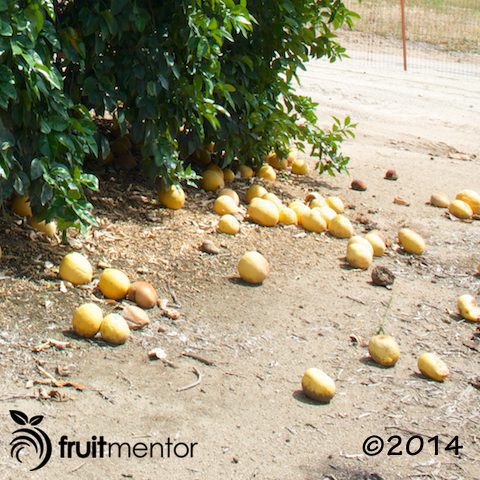
To get sweet, pummelos need more heat than other types of citrus fruit. David pointed out that the biggest problem in growing good pummelos here in California is our Mediterranean climate; our cool nights slow down the ripening of pummelos. In regions of Asia where the finest pummelos are grown, it is hot during the daytime and the nighttime. In the Citrus Variety Collection at Riverside, there are almost a hundred varieties of pummelos, but because of the Mediterranean climate, the fruit from most of the varieties falls off of the trees before it is even close to being ripe. In areas of Northern California such as the Santa Clara Valley, it is even more challenging to grow good pummelos because the weather is colder than in Southern California.
The pummelo varieties that are available in California are the sweetest and they have been made available because they do well even in our Mediterranean climate.
David also pointed out that pummelos are especially prized during Chinese New Year celebrations. Many Chinese would feel the same about an unripe pummelo at Chinese New Year as many Americans might feel about a Christmas tree that is unready for harvest at Christmastime.
In the mid 20th century, scientists at UC Riverside performed numerous breeding experiments in an attempt to develop new pummelos and pummelo hybrids more suitable to our Mediterranean climate. As a parent they chose a pummelo called Siamese Sweet. Siamese Sweet pummelos are insipid due to a lack of acid. Although Siamese Sweet tastes terrible, it made for the perfect breeding parent because its offspring often have an acidity level in-between it and the other parent. The breeding experiments were wonderfully successful and resulted in some of the finest citrus varieties which are now enjoyed all over the world. Five of the varieties in the pummelo taste tests were products of these breeding experiments.
Pummelo Taste Test Results
Tasters were asked to rate fruit on a numerical scale as follows: 9 = have never had better, 8 = excellent, outstanding, 7 = very good, 6 = good, above average, 5 = acceptable, average, 4 = below average, 3 = mediocre, barely worthwhile, 2 = poor, not suitable for fresh use, 1= atrocious, never had worse. The fruit of each pummelo variety was picked in early April in Exeter, California. For the taste test held in San Francisco we also had for comparison three pummelos that I grew in the Santa Clara Valley.
Tahitian Pummelo
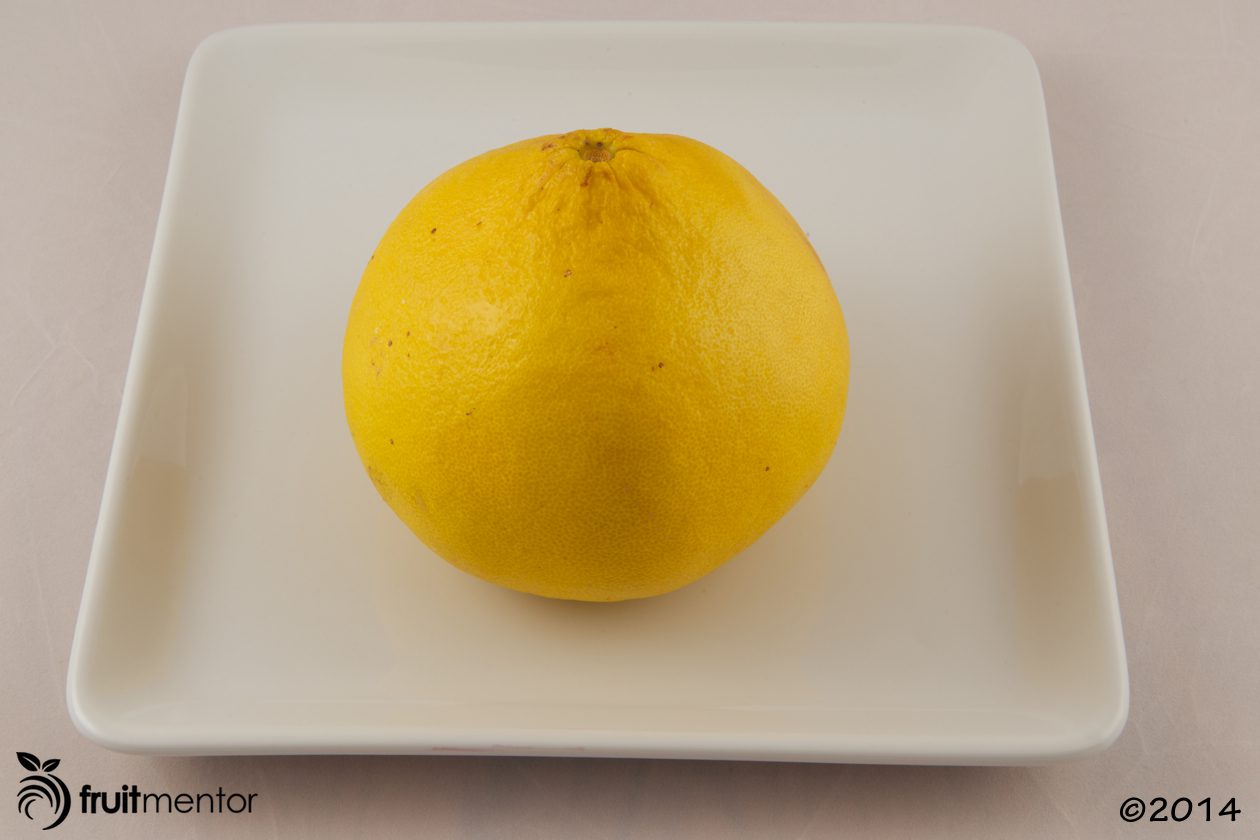
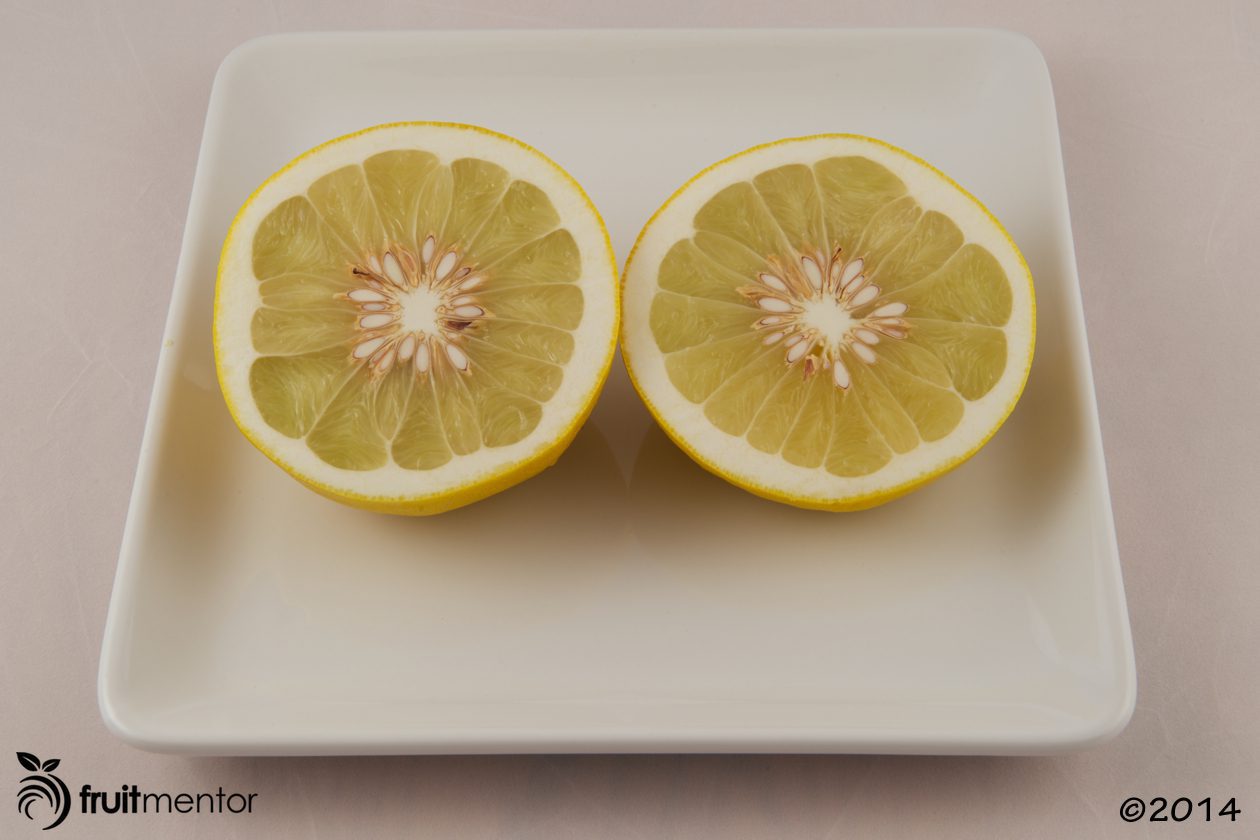
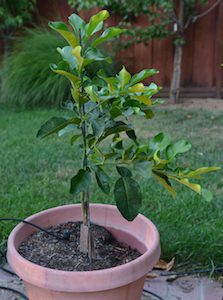
The Tahitian Pummelo was by far the taste test winner. The average score was between “excellent, outstanding” and “have never had better.” Those who had tasted pummelos in China and Vietnam said that it was similar to the pummelos in those countries.
Tahitian Pummelo does well in cooler climates such as the Santa Clara Valley. Tahitian Pummelo may not be ripe in time for Chinese New Year, however — especially in the cooler climates. Grown in a greenhouse in California, Tahitian Pummelo could be ripe in time for Chinese New Year.
Some tasters pointed out that Tahitian Pummelo is very seedy. David Karp mentioned to me that farmers in Southern California who are growing the seedy pummelo varieties have found a way to avoid the seeds. By placing nets over the trees when they are in bloom, the bees can be kept out and the flowers are not pollinated. Unpollinated flowers result in seedless fruit. The same method is widely used by mandarin orange growers to ensure seedless mandarins.
Melogold

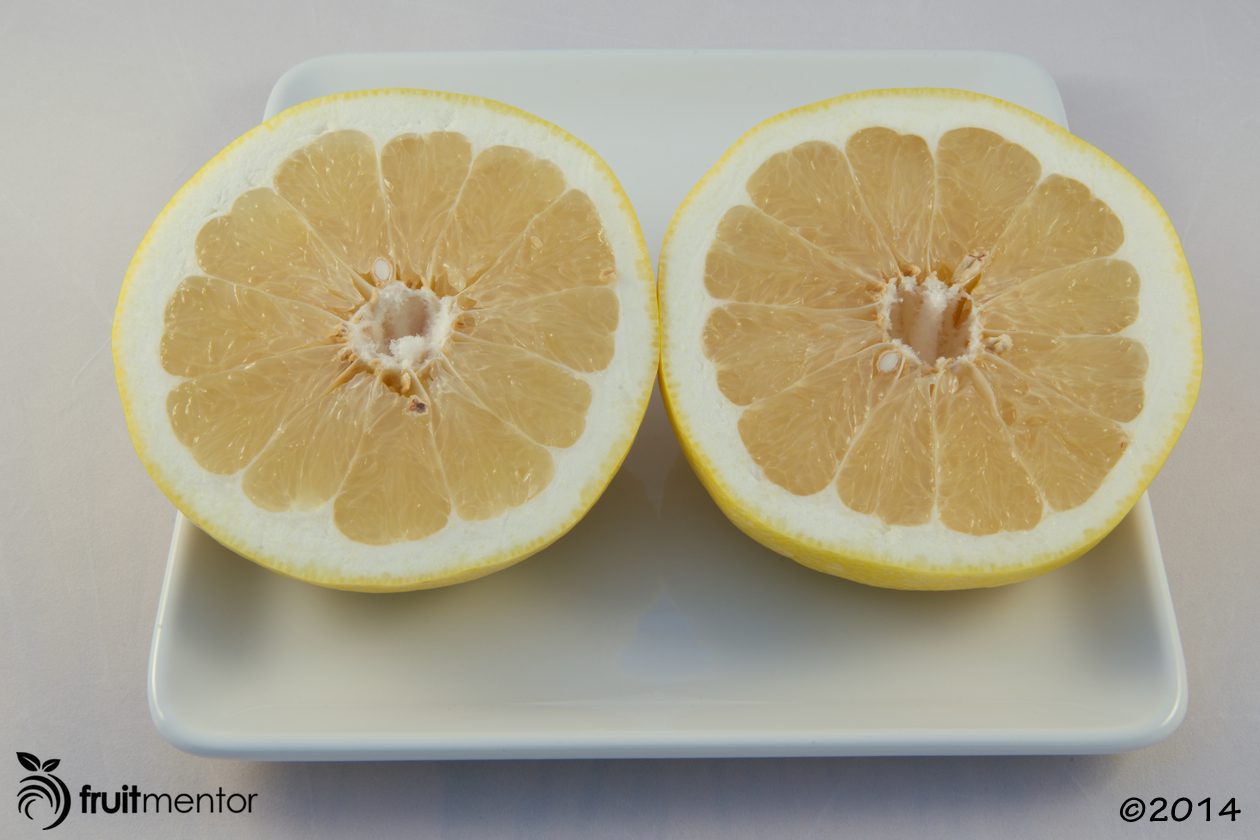
Melogold is one of the pummelo hybrids that resulted from the UC Riverside breeding experiments. It is a cross between Siamese Sweet Pummelo and a white grapefruit. Pummelo lovers who dislike grapefruit should not dismiss Melogold because of its grapefruit parent; Melogold is much more like a pummelo than a grapefruit in both size and flavor. Melogold is mild, sweet, and juicy. In the taste test Melogold scored between “very good” and “excellent, outstanding”.
Melogold is early to mature which may make it a good choice for those who would like to have a pummelo that is ripe by the Chinese New Year. For those who live in cooler climates, Melogold holds well on the tree — meaning that the fruit will stay on the tree and get sweeter and sweeter unlike the many pummelo varieties whose fruit fall on the ground before they are ripe.
One of my Chinese tasters was quite enthusiastic about Melogold and suggested that a fortune could be made selling it in China. I would not be surprised if Melogolds from California are already being sold in China. An internet search quickly revealed that California Melogolds are sold in Korea and Japan. Here we can see that they were being shipped to Korea by January 6 this year, well before the Chinese New Year.
Thong Dee Pummelo
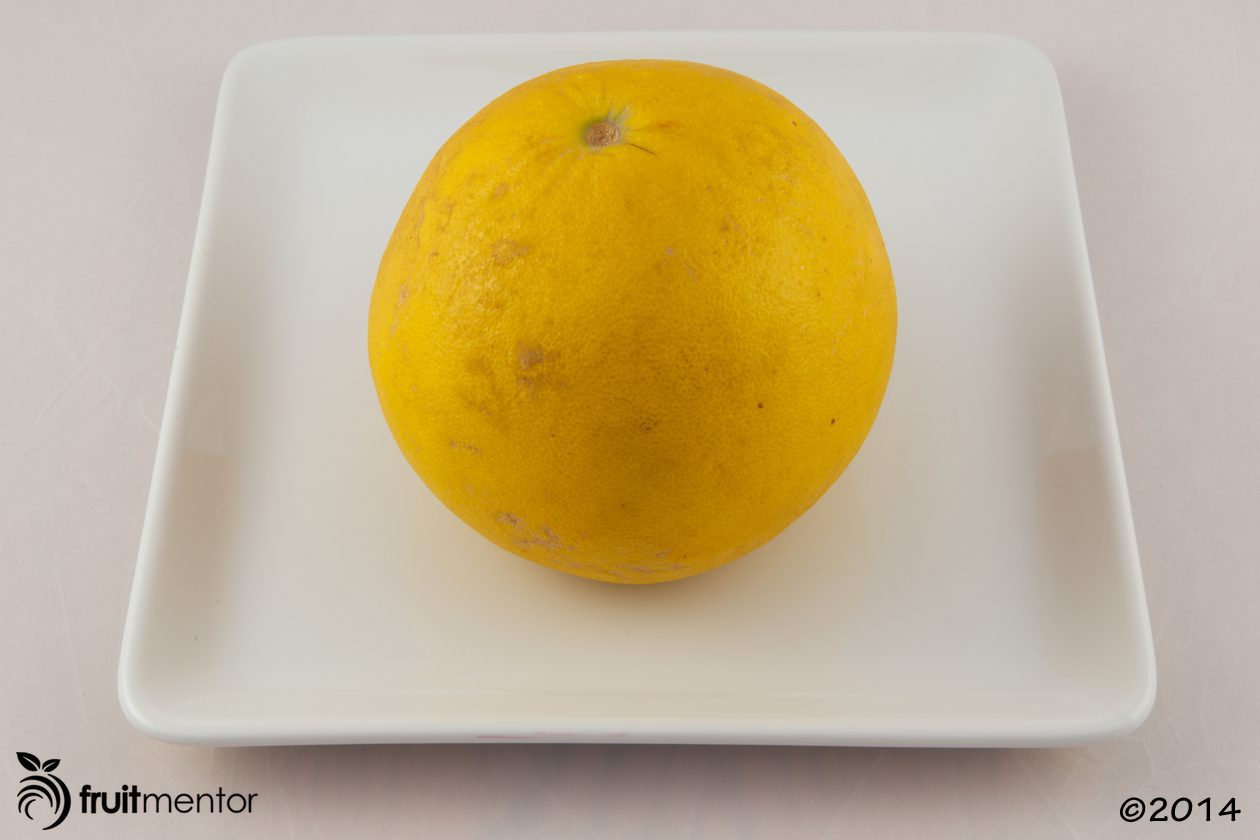
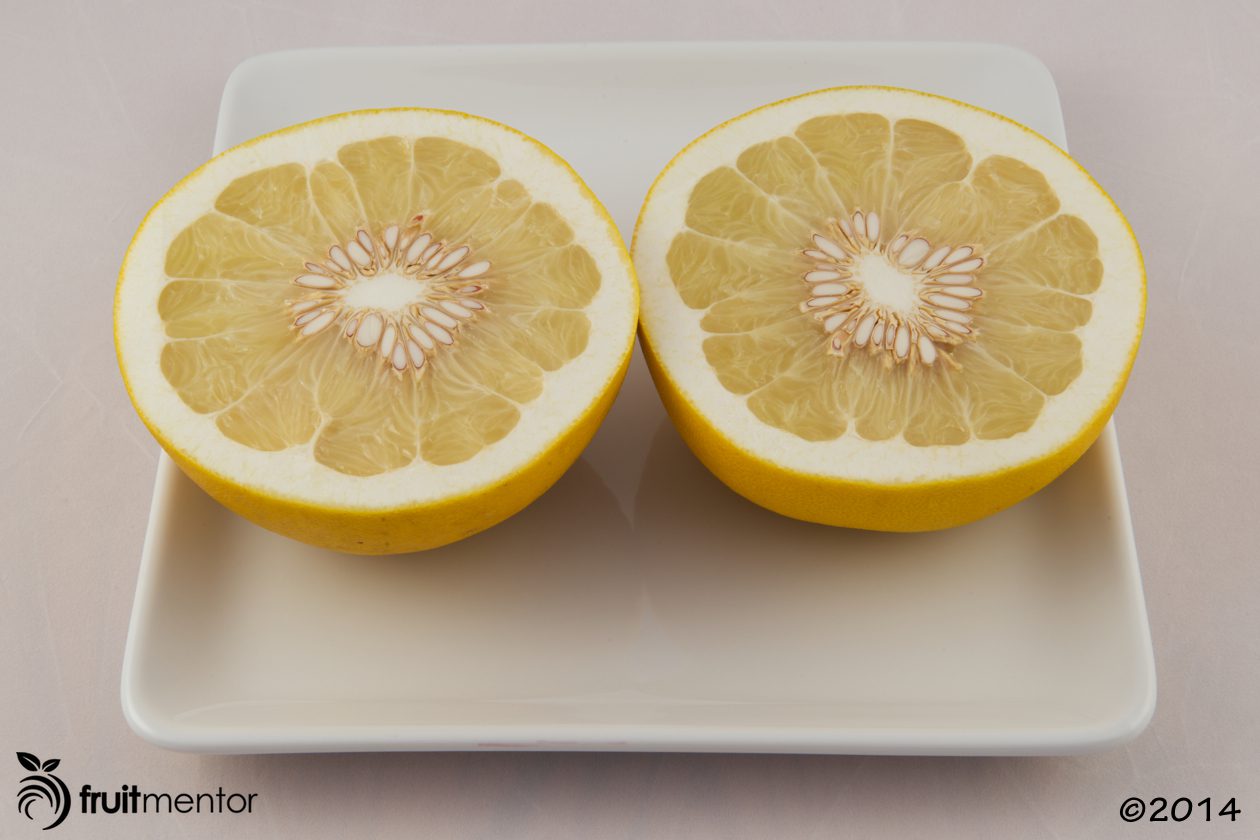
Thong Dee is a Thai Pummelo, so it was not surprising to learn from one of my tasters that it tastes similar to pummelos from Thailand. Thong Dee has a good taste and texture and was rated between “very good” and “excellent, outstanding” in the taste test. Thong Dee is reported to hold well on the tree and matures in midseason. I do not know how Thong Dee does in cooler climates, but since it is said to hold well on the tree, it may be worth a try, especially for someone who would like to grow a Thai pummelo.
Thong Dee tends to be seedy, but it should be possible to eliminate the seeds by netting the tree when it is flowering.
Sarawak Pummelo


Sarawak Pummelo is quite similar to Tahitian Pummelo. They are so similar that some people refer to Sarawak Pummelos as Tahitian Pummelos. I find that unfortunate since the taste testers had a preference for Tahitian over Sarawak; I wish that people would call a Sarawak a Sarawak.
Sarawak was one of the fruits where the San Francisco tasters were able to compare a fruit grown in Exeter to one grown in the Santa Clara Valley. The Santa Clara Valley Sarawak could not have been riper as it had just fallen to the ground. The Exeter Sarawak's taste rating was “excellent, outstanding” and the Santa Clara Valley Sarawak's taste rating was “good, above average”. The tasters all agreed that Sarawak is worth growing in the Santa Clara Valley. Had there been a Tahitian Pummelo available from the Santa Clara Valley, undoubtedly the tasters would have also deemed it worthwhile to grow.
Reinking Pummelo
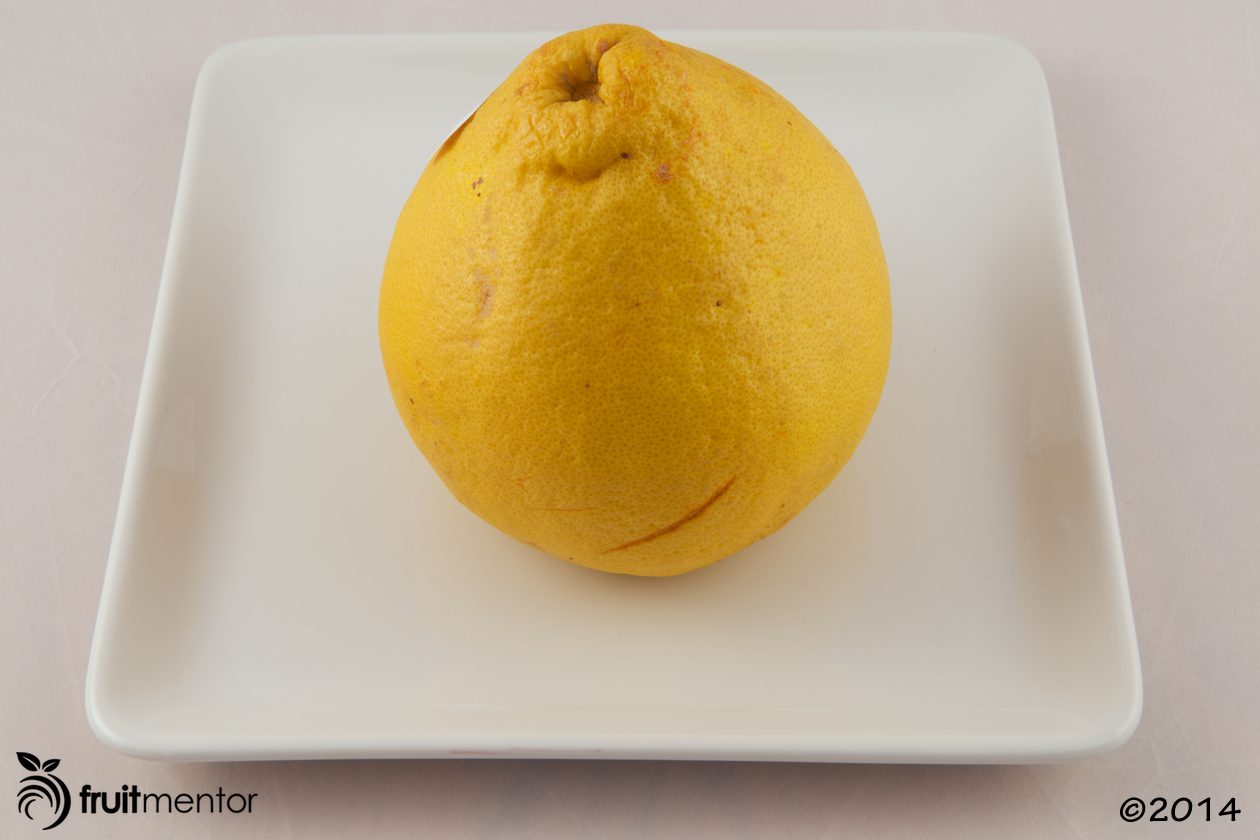
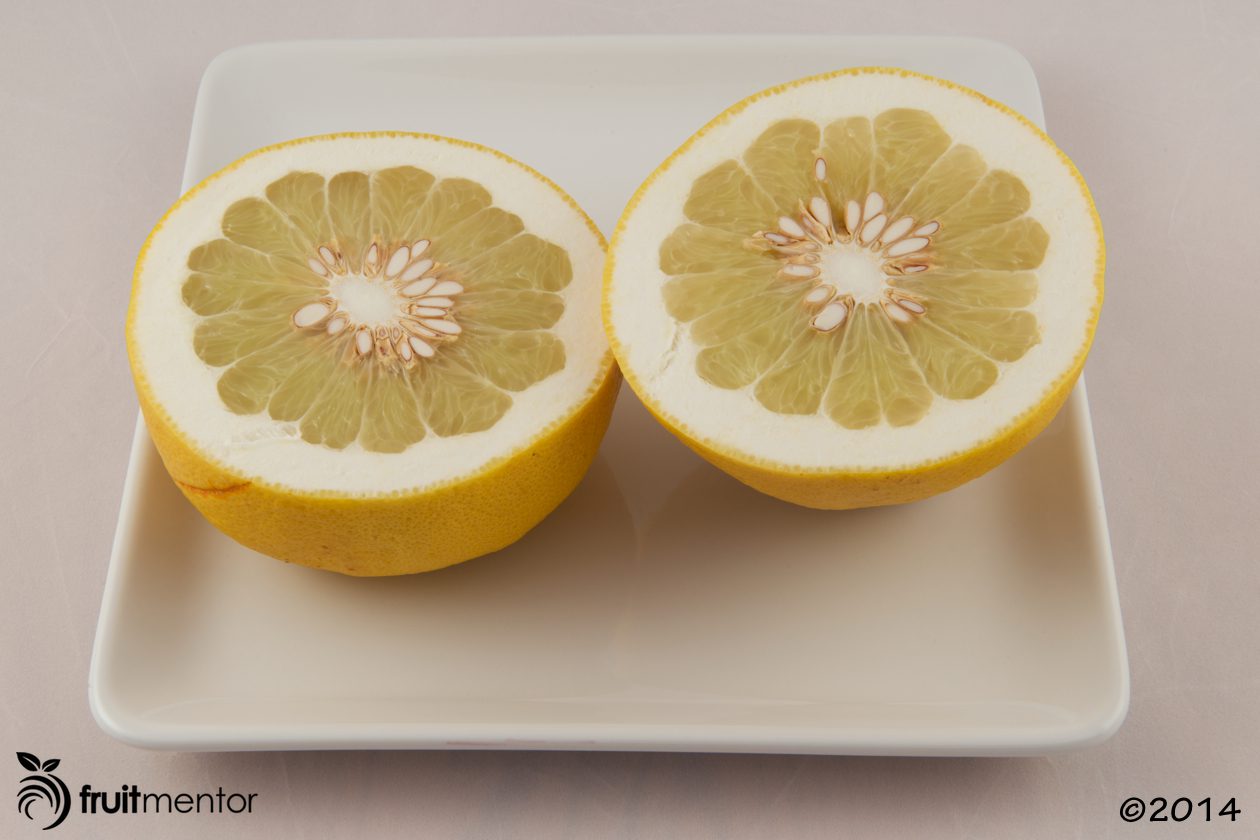
Reinking Pummelo received a taste rating of “very good”. Reinking Pummelo is seedy and is reported to mature early and hold on the tree fairly well. As with the other seedy pummelos, it should be possible to eliminate the seeds by netting the tree when it is flowering.
Chandler Pummelo

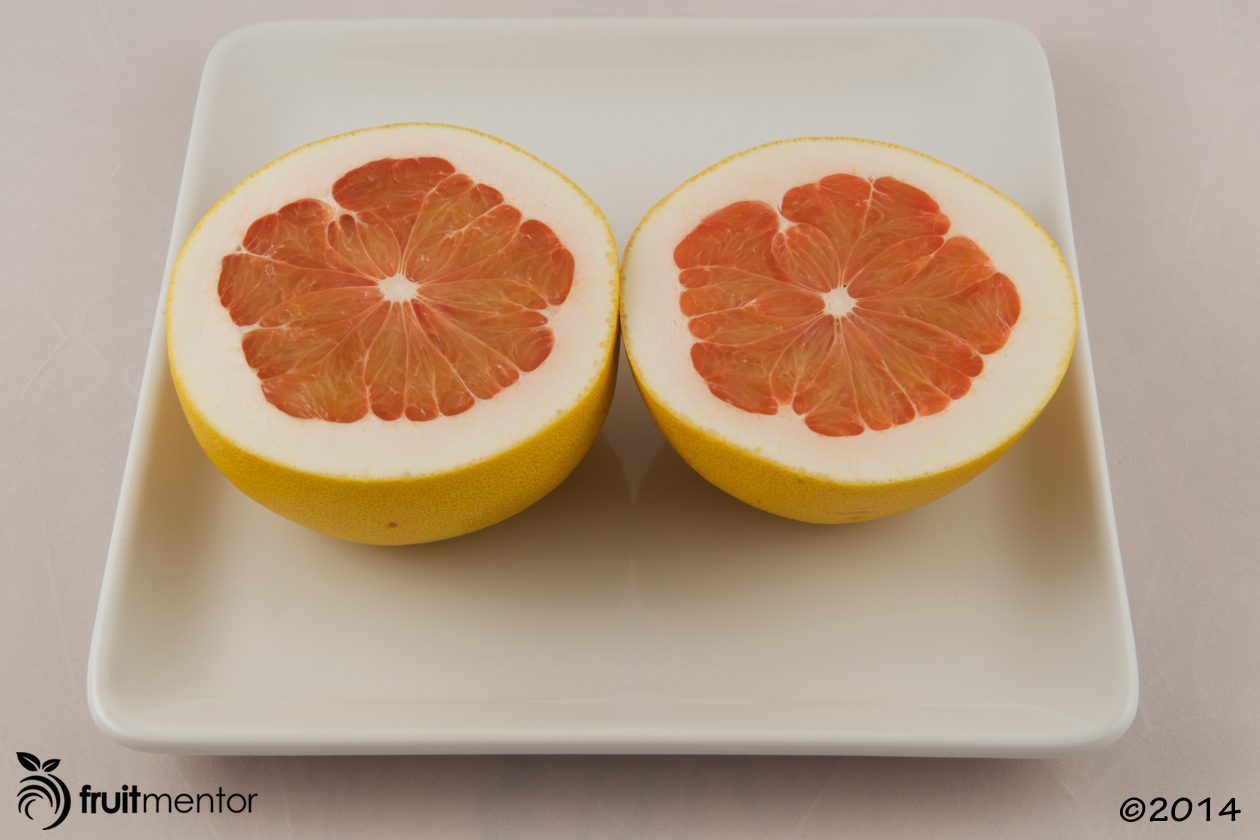
Chandler Pummelo is another of the pummelo hybrids that resulted from the UC Riverside pummelo breeding experiments. It is a cross between a Siamese Sweet Pummelo and a Siamese Pink Pummelo.
Chandler Pummelo is the second of the fruits where the San Francisco tasters were able to compare a fruit grown in Exeter to one grown in the Santa Clara Valley. The Exeter Chandler's taste rating was “very good”, but the Santa Clara Valley Chandler's taste rating was “below average”. The San Francisco tasters all agreed that I should cut down my Chandler Pummelo tree. I have never had a good fruit from my tree, although I have heard that others in the Santa Clara Valley have had good Chandlers.
Oroblanco

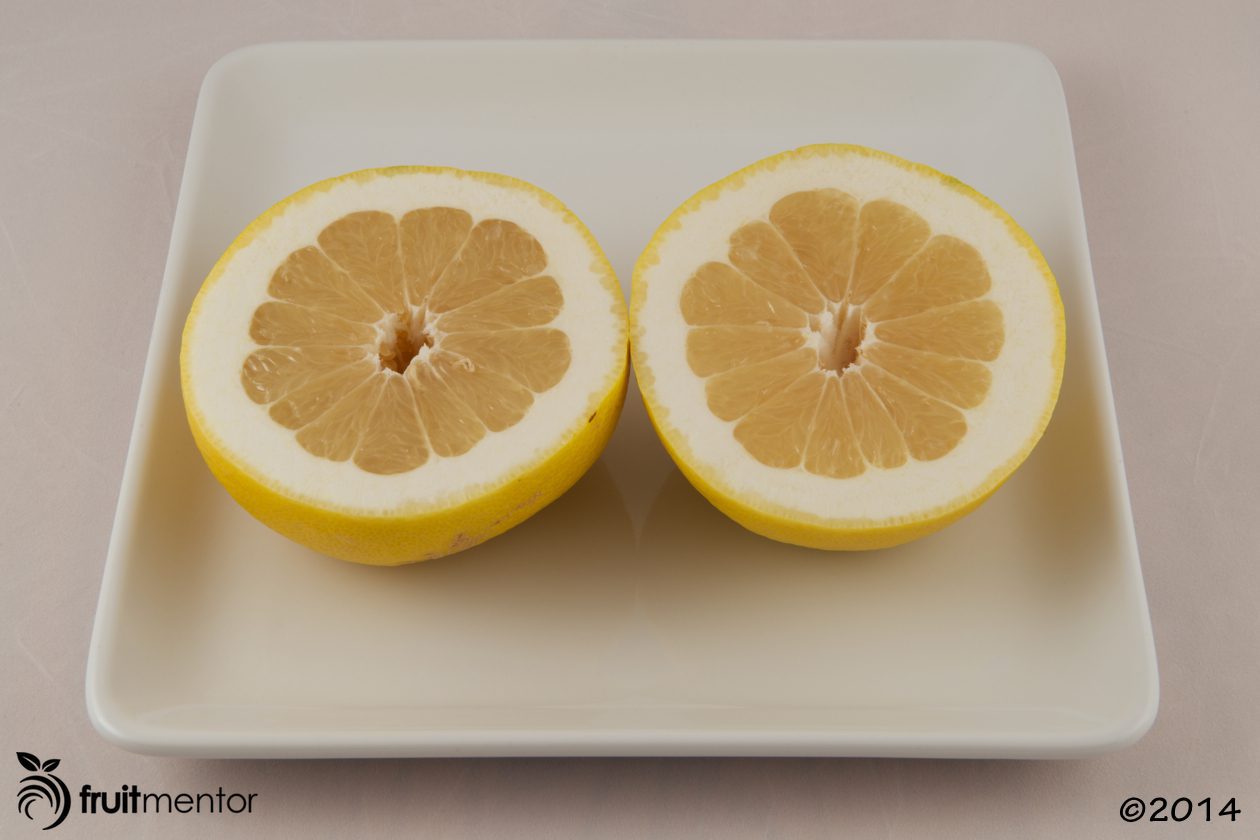
Oroblanco is another of the UC Riverside pummelo hybrids. Oroblanco is a sibling of Melogold and came from the same cross of Siamese Sweet Pummelo and white grapefruit. The taste of Oroblanco is similar to that of Melogold, but Oroblanco consistently wins in taste tests compared to Melogold. My taste tests were no exception; Oroblanco rated “excellent, outstanding”. Oroblanco is very sweet and is one is of my favorites.
Oroblanco is more grapefruit-sized than pummelo sized, but it is early to mature which may make it another good choice for Chinese New Year if the size is considered acceptable. Oroblanco holds very well on the tree, getting sweeter and sweeter into the summer.
Cocktail Pummelo hybrid
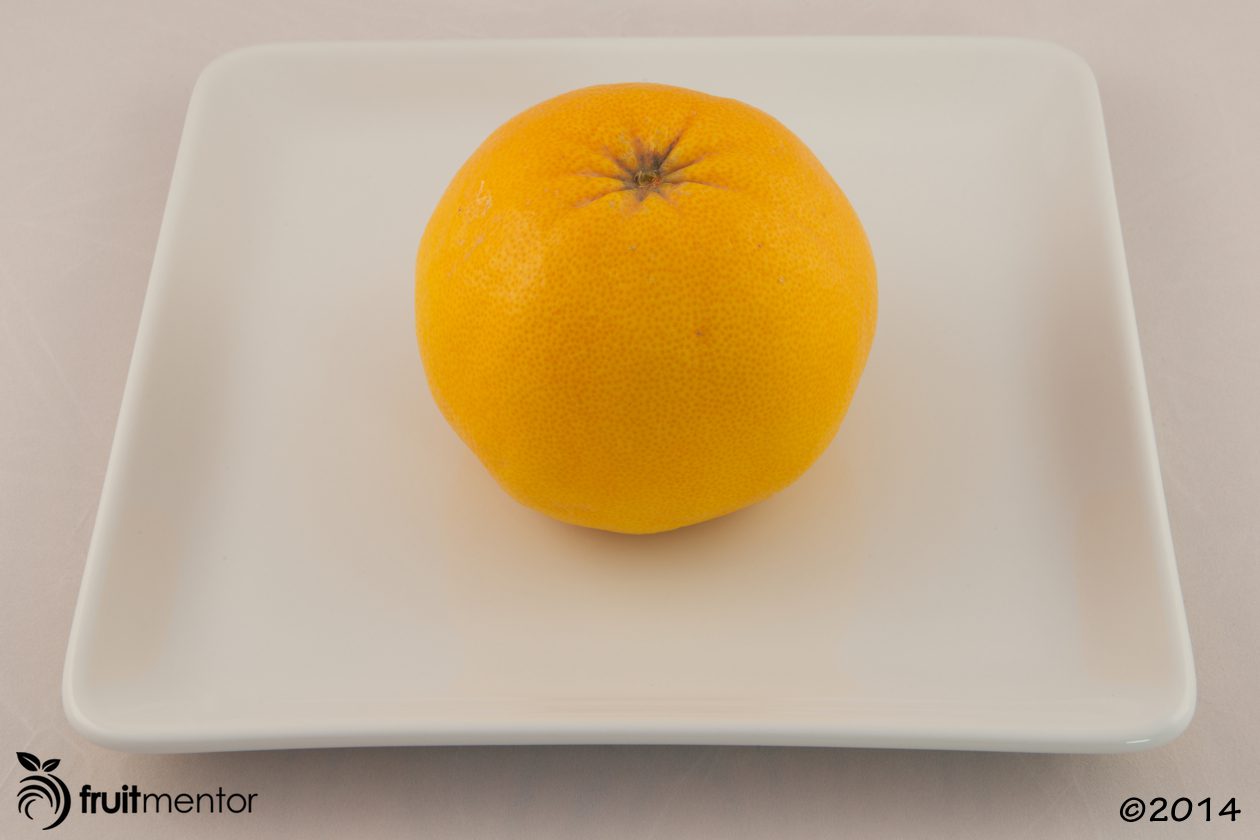
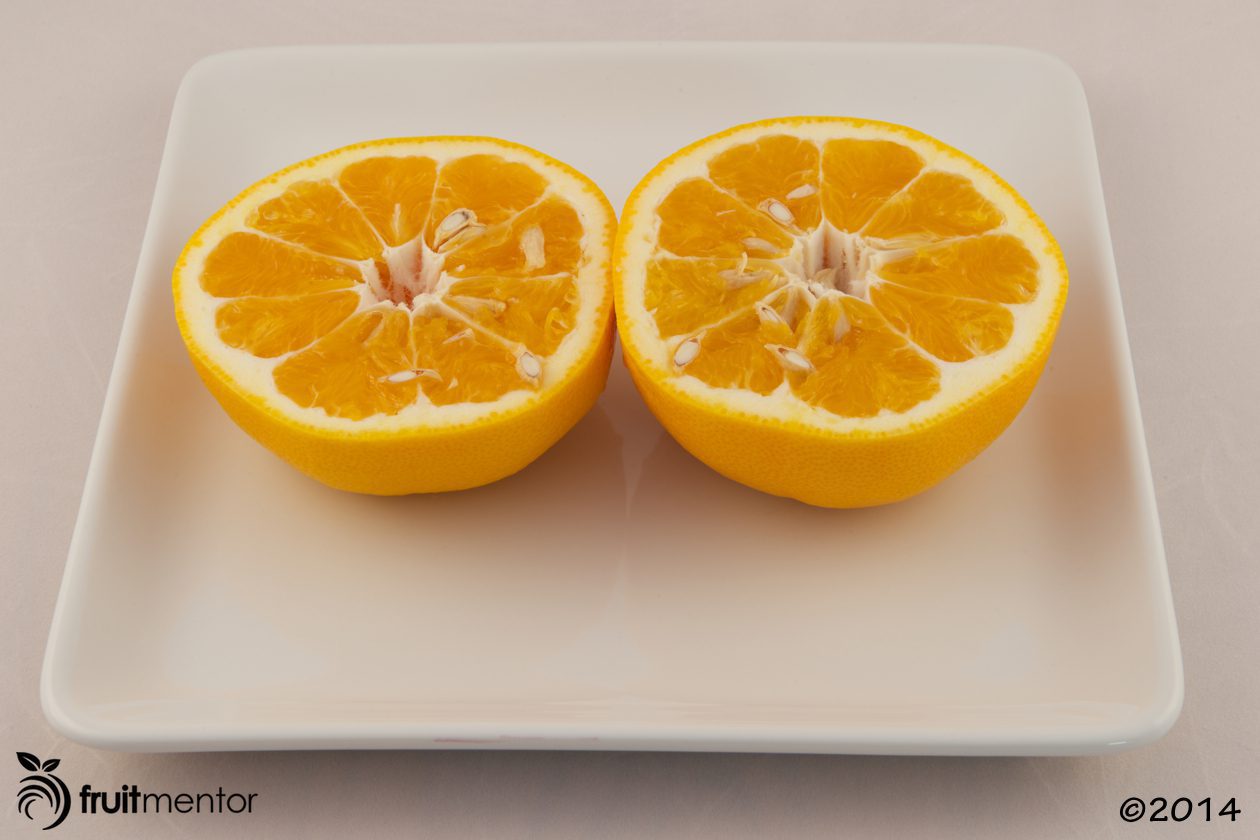
Cocktail Pummelo hybrid is yet another of the UC Riverside pummelo hybrids. It is a cross between a Siamese Sweet Pummelo and a mandarin orange. Cocktail is early to mature and holds well on the tree, making it another good choice for colder parts of California. The fruit is very seedy and very juicy. Cocktail is great for juicing, but I prefer to eat them. Cocktail is my daughter's favorite citrus fruit and it is one of my favorites.
Cocktail is the last of the fruits where the San Francisco tasters were able to compare a fruit grown in Exeter to one grown in the Santa Clara Valley. The Exeter Cocktail's taste rating was between “very good” and “good, above average”. The Santa Clara Valley Cocktail's taste rating was just below “good, above average”.
Valentine Pummelo hybrid


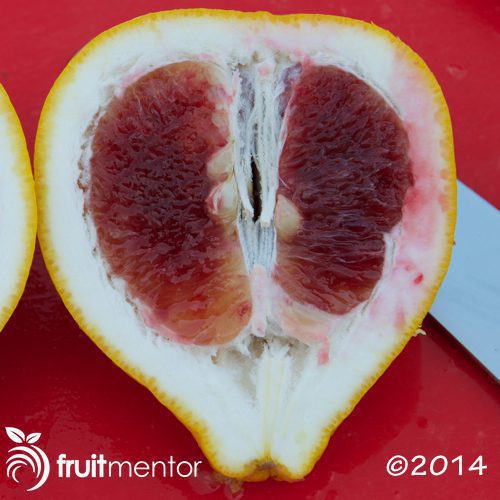
Valentine Pummelo hybrid is the most recent of the the UC Riverside pummelo hybrids to be released (2009). It is a cross between the Siamese Sweet Pummelo and a hybrid of a mandarin and a blood orange. It received the name Valentine because it matures around Valentine's day and resembles a heart when cut lengthwise and turned upside down.
Valentine was rated “excellent, outstanding” in the taste tests. Because of its Siamese Sweet parent it has the potential to do well in colder parts of California. The Valentine pummelo that I harvested from my tree in the cooler climate of the Santa Clara Valley in 2015 was delicious!
Conclusions and Recommendations
Pummelo lovers in California who would like to grow their own have a wonderful selection of varieties from which to choose. Tahitian Pummelo is a good choice for lovers of Vietnamese and Chinese pummelos; Thong Dee is a good choice for lovers of Thai pummelos. For those who would like them to be ripe by Chinese New Year, consider growing these two varieties in a greenhouse. For those who prefer seedless fruit, consider netting them.
For a pummelo most likely to be ripe by Chinese New Year, Melogold and Oroblanco are the best choices; Melogold is more like a pure pummelo, but Oroblanco ranks slightly higher as far as taste is concerned.
Trees of six of these nine pummelos are readily available in California nurseries, so grafting is not even required. Those six are: Tahitian, Chandler, Valentine, Melogold, Oroblanco, and Cocktail. If your local nursery does not have the one you want in stock, ask them to find it for you. Be sure to buy your tree locally as moving citrus trees a long distance has the potential to spread both citrus greening and the Asian Citrus Pyllid which carries citrus greening.
Of the other three, I do not consider Reinking and Sarawak to be worthwhile given that Tahitian is available. For those who would like to grow a Thai pummelo, Thong Dee is the only choice; the best bet would be to order the clean, disease-free budwood of Thong Dee from the CCPP and graft it to an existing tree in one's yard or to a locally bought nursery tree.
If you have enjoyed this article, could you please do me a favor and share it? I hope that this article will help people to grow delicious pummelos and will also help to prevent the further spread of citrus greening. If you would like to volunteer to translate this article into Chinese, Vietnamese, Thai, or any other language, please get in touch with me; I would love to work with you to spread the word on California Pummelos.
Acknowledgements
Thank you so very much to Georgios Vidalakis, Rock Christiano, David Karp, and Mikeal Roose for their help and input for this article. I also would like to thank the many tasters who rated the California pummelos and filled out surveys.


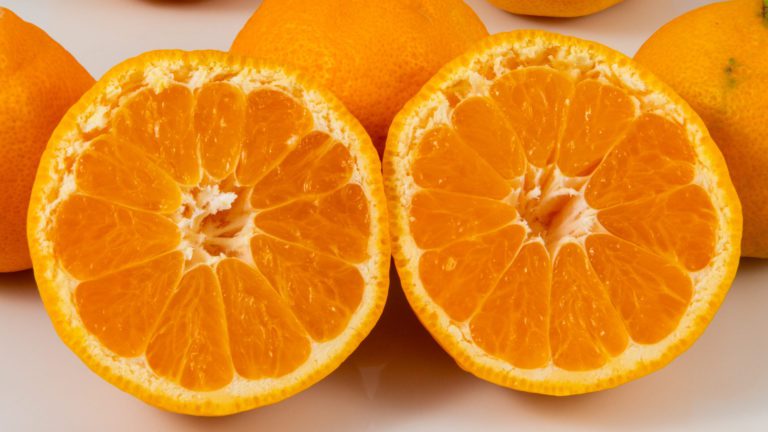
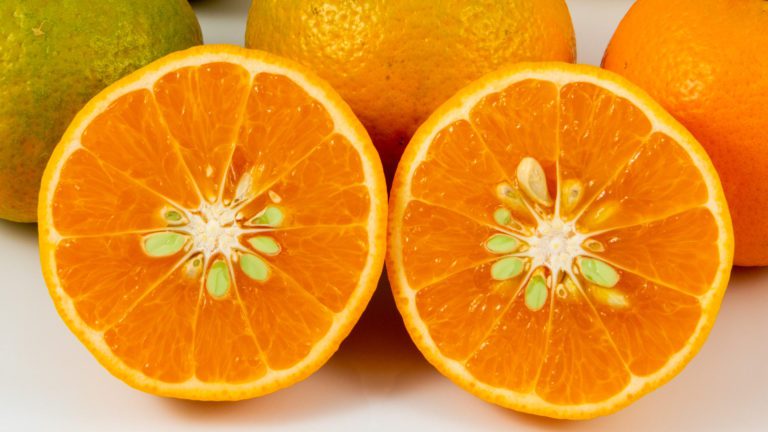
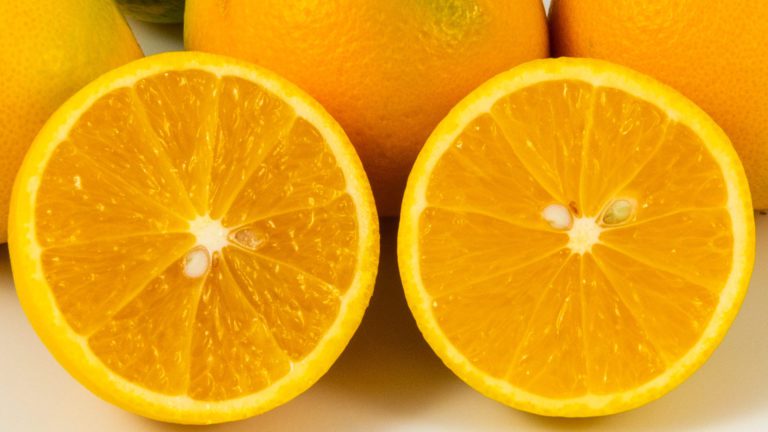


Outstanding article for anyone wanting an introduction to the world of pummelos. Well researched, as well as pragmatic.
Thank you, Hubert!
Great article Dan, I live in the SoCal desert area and already grow some citrus and have been debating what type of pomelo to try, I think I will try the oro blanco and cocktail because they are everywhere here and readily available. Hopefully my desert heat will sweeten up the fruit nicely.
Evdesert
Thank you! Oroblanco and Cocktail are great choices; I hope that you will enjoy them as much as I do!
Hello! Thank you very much for your great videos and other web postings. They are sooo useful!
I live in Northern Virginia and have a small greenhouse in my backyard. I have some rootstock that i grew from seed (most likely lemons and tangerines). I would like to graft some citrus varieties that are likely to do well in our climate. What would you recommend? Also what refernce material would you recommend so I can learn more about citruses, how to grow them, their temperature and other needs and so on. Many thanks again!
You are very welcome! I am glad that you have enjoyed the videos and articles.
The rootstock has a big impact on the quality of the fruit, so my recommendation would be to buy a grafted tree instead of grafting to an unknown rootstock. You can expect a nursery tree to be grafted on a rootstock appropriate for the variety. One variety that I think would probably be a good choice for a greenhouse in Northern Virginia is Seedless Kishu. The fruit are very small — golfball sized — and very delicate, so it would never succeed as a commercial variety and you would never see the fruit in a store. I like to grow varieties that I would not be able to find otherwise. Seedless Kishu is very sweet and has become a popular variety for homeowners in California. A couple of other good choices might be Owari Satsuma for another mandarin orange and Meyer Lemon if you would like to grow lemons. You can buy all of these trees mail order and you would get fruit much sooner and with much less trouble than if you were to graft your own.
I found Sunset Citrus to be very helpful when I was starting to learn about citrus and would recommend it as a good starting point.
Tijen, I have family in Chesterfield VA. I could not find any citrus in any of the nurseries there and I was not surprised because citrus cannot take freezing temperatures. As long as you can keep the temp in your green house above 32 F. then you should be able to grow most types of citrus (my opinion). Some citrus like lemons and limes are easy to grow. Some others like grapefruit take more sun and heat to produce good fruit. I’ve got over 100 fruit trees and some really top fruit. If you can get the trees I would suggest the best tangerine ever – Tahoe Gold Mandarin, Cara Cara Orange, 2nd best tangerines – gold nugget and pixie. Outside your green house you should plant the cotton candy aprium, flavor king pluot, and the snow queen nectarine. Some varieties are low chill – I live in San Diego CA. You must do research to find the best varieties for your area because the nurseries carry varieties that might not be good or grow well in your region – for example – home depot has sold varieties that need too much chill for San Diego, so whoever bought them will likely not get any fruit. Trust me on one thing for sure – if you can get a Tahoe Gold, do it. It ripens in Feb-March. You can verify what I am stating by ordering some online when they are in season. I’ve planted 5 Tahoe gold trees and have grafted it to some other trees as well.
I agree with what Dan stated about buying a tree. It takes a long time to get a tree from a graft or cutting. I wanted a Shasta gold tangerine and could not buy the tree anywhere, so I ordered the budwood from CCPP and grafted it to a tangerine seeding with a trunk size of about 5/8″dia. It is now about 18″. The professionals use root stock that has various properties like root rot or disease and pest resistance. Since you are growing in a controlled environment using specific soil you will probably be ok to use your seeding. I assume you will have the tree in a planter and move it outside in the summer. Just remember – 1 day of freezing and your citrus will probably be killed.
Thank you for the great article Dan!!
As a citrus farmer in the Central San Joaquin Valley I appreciate any and all education and awareness about all the great and unique citrus varieties out there. We grow over 20 different varieties including the Tahitian Pummelos, which I will harvest soon to go on our road side fruit stand!
Thank you, Katy! I was able to taste a Tahitian Pummelo from the Valley this year and it was delicious!
Do you think Oroblanco, Melogold and Valentine Pummelos can survive the weather in Tucsson, Arizona? What should I do to protect pummelo fruit trees during the winter time? Any special tips to keep these trees healthy. Please advise and thanks. Van
I expect that Oroblanco, Melogold, and Valentine trees would grow well in Tuscon, but the thing that I am not sure about is the quality of the fruit. It may be too hot there and the fruit may become insipid. I suspect that grapefruit may be a better choice for your climate.
For wintertime protection of citrus trees during a rare freeze, I have had success with Christmas lights and covering the trees with sheets, blankets, and towels.
Hi – how about Red ruby or rio grapefruit – are they any good compare to Melogold or Oroblanco. I saw a lot of Chandler and Rio grapefruit in Costco and Lowes. I need to look for Melogold or Oroblanco then since you said they taste good. THanks.
Hi Susan,
It depends upon the climate. Where I live in Northern California I sometimes see grapefruit trees in nurseries. My experience is that it is too cold here to grow good grapefruit. I have heard that some people have had success by leaving the fruit on the tree an extra year, but I have yet to grow a good grapefruit. I think that there is a demand for the trees in local nurseries because people like the store-bought fruit which was grown in a more suitable climate. Melogold or Oroblanco are better choices for my climate. If you live in California’s Central Valley, Southern California, Texas, or Florida then you may be able to grow better grapefruit than me. If you live in a cooler climate then Melogold or Oroblanco might be a better choice.
Very interesting article Dan. I live in Santa Clara too. Can I contact you by email?
Thank you, Robert. If you click “About” at the top of the page it will take you to a screen where you can send me an email.
Dan, as always with your published articles, this article is excellent. Thanks for all you do for the citrus industry in general. I have copied the URL and posted the article on the Tropical Fruit Forum’s Citrus Page for our readers education.
Regards,
Millet (January 13, 2019